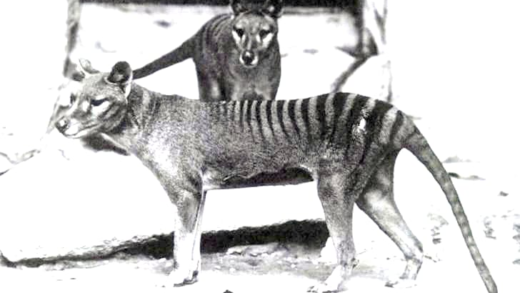The Human Blockhead Act is a unique performance art involving hammering a nail into the nostril, combining skill and fearlessness. Performers, known as “human blockheads,” face risks such as nasal injuries and psychological challenges. Preparation includes physical conditioning and understanding anatomy. Famous performers like The Great Omi have shaped its history, making it a respected act in modern sideshows.
What is the Human Blockhead Act?
The Human Blockhead Act is a captivating performance art that involves hammering a nail into the nostril. This daring act, often seen in circus sideshows and variety shows, showcases the unique abilities of performers willing to push the limits of human endurance and skill. The essence of this act lies in the combination of fearlessness and technique, turning what might seem like a reckless stunt into a carefully choreographed performance.
Performers, known as “human blockheads,” train extensively to master this art. They develop a keen understanding of their anatomy, ensuring they can perform safely. The audience is often left in awe as they witness the seemingly impossible. This performance is not just about shock value; it reflects years of practice and dedication.
How Does a Performer Hammer a Nail into Their Nostril?
The technique behind the Human Blockhead Act involves a series of precise movements and a deep understanding of human anatomy. The performer first selects a suitable nail, typically a common construction nail, and ensures it is clean and safe for use. They begin by positioning the nail at the entrance of the nostril.
With a steady hand, the performer taps the nail gently, using a small hammer to guide it into the nostril. This requires immense control and confidence, as the goal is to insert the nail without causing injury. Some performers use their other hand to stabilize their head, creating a more controlled environment for the act.
Throughout this process, performers maintain focus on their breathing and body movements. This methodical approach minimizes the risk of accidents, allowing them to perform the act smoothly. The nail is often hammered in just far enough to create the illusion without penetrating too deeply.
What Are the Risks Associated with the Human Blockhead Act?
While the Human Blockhead Act is fascinating, it comes with several risks that performers must consider. The most significant danger is the potential for nasal injuries, which can occur if the nail is inserted too deeply or at the wrong angle. This can lead to bleeding, infections, or even damage to the nasal passages.
Additionally, there is a risk of damaging the sinuses or causing long-term health issues if proper precautions are not taken. Infections can arise from using unsanitized materials, emphasizing the need for cleanliness and preparation.
Performers also face psychological risks, such as anxiety and fear of failure. Overcoming these mental barriers is crucial for executing the act successfully. Overall, safety measures, including training and adherence to best practices, are essential for minimizing these risks.
How Do Performers Prepare for the Human Blockhead Act?
Preparation for the Human Blockhead Act involves rigorous training and mental conditioning. Performers typically undergo several steps to ensure they are ready for the challenges ahead. Firstly, they must build their confidence through practice, often starting with simpler stunts before progressing to the blockhead act.
Physical conditioning is also important. Performers need to develop a strong understanding of their body mechanics to execute the act safely. This includes exercises to enhance their stability and control, as well as techniques to manage their fear response during performances.
Moreover, familiarization with anatomy plays a vital role in preparation. Understanding the structure of the nasal cavity allows performers to know their limits, which is crucial for performing without injury. Regular practice and seeking guidance from experienced performers can significantly enhance their skills and safety.
How Do Performers Minimize Risks in the Human Blockhead Act?
The Human Blockhead Act, while thrilling, comes with its fair share of risks. To minimize these dangers, performers adopt several key techniques:
- Sanitization: Ensuring the nail and all tools used are thoroughly cleaned prevents infections.
- Controlled Environment: Performers often practice in a safe, familiar setting to reduce anxiety and increase focus.
- Warm-Up Exercises: Just like athletes, they perform stretches and exercises to prepare their bodies, especially their neck and facial muscles.
- Spotters: Having a trusted colleague or friend nearby can help in case of emergencies.
- Gradual Progression: Many performers start with lighter objects before advancing to nails, building both confidence and skill.
These techniques not only enhance safety but also improve the overall performance quality. A careful approach ensures that the act remains an impressive feat rather than a dangerous gamble.
The Fascinating History of the Human Blockhead Act
The Human Blockhead Act has a rich history that stretches back to the early days of sideshow entertainment. Originating in the 19th century, this act was part of the larger tradition of carnival performances, where extraordinary feats were showcased to astonished audiences. Initially, it was often viewed as a grotesque curiosity, but over the years, it evolved into a respected art form.
Notable performers, such as The Great Omi and G. Harry Stine, popularized the act in the mid-20th century, bringing it to television and mainstream audiences. These performers not only wowed crowds but also transformed the perception of the Human Blockhead from mere shock value to a demonstration of skill and control.
As the act gained popularity, it became a staple in circuses and variety shows, often accompanying other bizarre feats. Today, the Human Blockhead continues to be celebrated in modern sideshows, retaining its allure and captivating new generations.
Considerations Before Attempting the Human Blockhead Act
Before anyone considers attempting the Human Blockhead Act, several factors must be evaluated. First and foremost, understanding the risks involved is crucial. This includes not only physical injuries but also the psychological impact of performing such a daring stunt.
Potential performers should ask themselves:
- Do I have experience with similar acts? Previous performance experience can significantly reduce the risk of injury.
- Am I physically fit? A strong and stable body is essential for executing the act safely.
- Have I consulted with professionals? Learning from seasoned performers can provide valuable insights and safety tips.
- Am I prepared mentally? Confidence and mental preparedness play a crucial role in performing without fear.
By thoroughly considering these aspects, aspiring human blockheads can better prepare themselves for the challenges ahead.
Famous Human Blockhead Performers
Throughout history, several individuals have made their mark as renowned human blockhead performers. Some of the most notable include:
- The Great Omi: One of the most famous blockheads of the early 20th century, known for his flamboyant style and theatrical performances.
- G. Harry Stine: A pioneer who brought the act to television, showcasing the blend of skill and showmanship.
- Dan Meyer: A modern performer who has gained a following for his engaging performances and educational approach to the act.
These performers have not only entertained audiences but have also contributed to the evolution of the Human Blockhead Act, ensuring its place in the world of performance art.
The Fascinating History of the Human Blockhead Act
The Human Blockhead Act has a rich history that stretches back to the early days of sideshow entertainment. Originating in the 19th century, this act was part of the larger tradition of carnival performances, where extraordinary feats were showcased to astonished audiences. Initially, it was often viewed as a grotesque curiosity, but over the years, it evolved into a respected art form.
Notable performers, such as The Great Omi and G. Harry Stine, popularized the act in the mid-20th century, bringing it to television and mainstream audiences. These performers not only wowed crowds but also transformed the perception of the Human Blockhead from mere shock value to a demonstration of skill and control.
As the act gained popularity, it became a staple in circuses and variety shows, often accompanying other bizarre feats. Today, the Human Blockhead continues to be celebrated in modern sideshows, retaining its allure and captivating new generations.
Considerations Before Attempting the Human Blockhead Act
Before anyone considers attempting the Human Blockhead Act, several factors must be evaluated. First and foremost, understanding the risks involved is crucial. This includes not only physical injuries but also the psychological impact of performing such a daring stunt.
Potential performers should ask themselves:
- Do I have experience with similar acts? Previous performance experience can significantly reduce the risk of injury.
- Am I physically fit? A strong and stable body is essential for executing the act safely.
- Have I consulted with professionals? Learning from seasoned performers can provide valuable insights and safety tips.
- Am I prepared mentally? Confidence and mental preparedness play a crucial role in performing without fear.
By thoroughly considering these aspects, aspiring human blockheads can better prepare themselves for the challenges ahead.
Famous Human Blockhead Performers
Throughout history, several individuals have made their mark as renowned human blockhead performers. Some of the most notable include:
- The Great Omi: One of the most famous blockheads of the early 20th century, known for his flamboyant style and theatrical performances.
- G. Harry Stine: A pioneer who brought the act to television, showcasing the blend of skill and showmanship.
- Dan Meyer: A modern performer who has gained a following for his engaging performances and educational approach to the act.
These performers have not only entertained audiences but have also contributed to the evolution of the Human Blockhead Act, ensuring its place in the world of performance art.





Comments are closed.